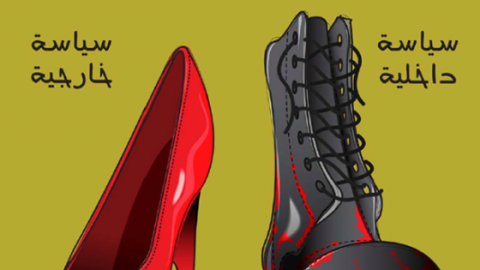Syrian artist Hakam al-Waheb was born in the city of Hama in 1975. He graduated from the Damascus faculty of fine arts in 1999 and moved to the Gulf soon after that.
Most of Waheb’s work is based on digital technology. He rescues traditional art and adds a modern touch to it.
The artist, as he explained in a conversation with Syria Untold, was marked by the Syrian uprising: “I stood by it from the beginning, but it took me a little longer to get involved through my art.”
He started publishing his work under a pseudonym, for fear that his family inside Syria would be affected. When so many people, including some family members, joined the uprising, he overcame his fear and started signing his work with his real name. He defines his art as “a humble translation of a genuine work taking place on the ground in a genuine Syrian language.”
Regarding the relationship between art and revolution, al-Waheb said that “in the case of the Syrian revolution, art cannot live up to it. We usually hear art is superior to life, but in this case it is quite the opposite. Art can not even begin to capture what is taking place in Syria.”

One of his constant themes is the contradiction between Syria’s internal politics and the discourse regarding foreign politics, as it is shown in one of his most famous drawings: internal politics is represented by a military boot, whereas foreign affairs are represented by a red high-heeled shoe.
The artist admitted that he has received more from the revolution than he has given back. “It gave me my humanity, and my art. Before, my work had no depth, now it is full of intensity, shades and nuances, that are inspired by the pain and the blood of our martyrs.”
Nevertheless, the daily bloodshed affects the artist’s life with a never-ending pain. “Just when you feel that you have become desensitized, another massacre, like the chemical attacks in al-Ghouta or the Banias massacre, comes along and rubs more salt in your open wound.”
“Syria is engraved on our hearts”, he added, “but we have not been able to express how we see it and feel about it… until now.”



